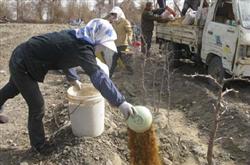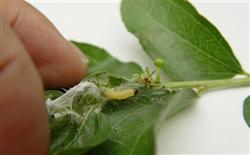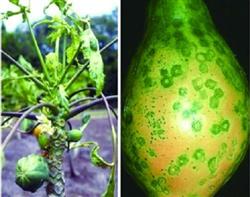How to manage the florescence of jujube?

How to manage the florescence of jujube? Is there any way to prevent and control the flowering and fruit drop of jujube? Also ask experienced netizens to help introduce because jujube flowering period is long, flower quantity is large, consumption is very large, and flower bud differentiation in this period is synchronously carried out with fruiting branches and fruit setting, which leads to jujube flowering without fruit or a large number of falling fruit. Therefore, the land planting network has sorted out the management steps of jujube flowering period, which are listed step by step for netizens' reference. Step 1. First, topdressing of jujube trees at flowering stage is generally carried out in late May, mainly with available nitrogen fertilizer and appropriate amount of phosphate fertilizer, generally 0.5 kg urea and 0.5 kg ammonium dihydrogen phosphate are applied to each fruiting tree. Watering flower water in time after fertilization, loosening soil to preserve soil moisture. Step 2, armour opening of jujube trees: generally, when the flowering amount of jujube trees accounts for 30% or 50% of the total buds, young and strong trees are encouraged to open armour. The first nail opening of the tree is carried out on the trunk 20 cm 30 cm above the ground, and then the nail opening part moves up 5 cm 10 cm per year. When the first main branch is reached, repeat the above operation. The width of the nail mouth should be 0.3 cm 0.6 cm. The opening nail width of the strong tree should be wide and the weak tree should be narrow, and when it is overcast and rainy during the flowering period, it can be appropriately widened by 0.1 cm by 0.2 cm, but the widest width should not exceed 1 cm. After nail opening, you should pay attention to nail mouth protection, and apply 100,200 times liquid Lesbon and other insecticides every other week or so. The nail mouth with slow healing process is smoothed with mud, which is not only insect-proof but also moisturizing, which is beneficial to the healing of nail mouth. Kaijia can also be used with the new technology to use Huawang 2. The period of use is the first time when the jujube blossoms are about 20%, and then the second time after 30-35 days. Step 3. Heart-picking of new jujube shoots: from mid-May to late June, the first and second branches of new jujube which are not backbone branches are picked in time, so as to control the growth of developing branches, reduce nutrition consumption and improve fruit setting rate. In general, when the new jujube head of the adult tree grows to 2 ~ 6 secondary branches, the top is removed, and the secondary branches are picked with the growth, the 3 ~ 4 secondary branches at the base of the jujube head grow to 5 ~ 7 nodes, and the upper 1 ~ 4 secondary branches grow to 3 ~ 5 nodes. The degree of picking the heart depends on the growth of the jujube head and the size of the space, generally weak branches pick the heart, strong branches pick the heart lightly, when the space is large, the heart is picked again when the space is small. In this period, in addition to picking the heart, the newly germinated jujube should be erased from the base as soon as possible to remove the overdense perennial branches, so as to save nutrients and facilitate ventilation and light penetration. Step 4, three sprays at the flowering stage of jujube trees: first, fertilizer spraying is carried out during the flowering period of jujube, and 0.3% urea + 0.1% potassium dihydrogen phosphate + 0.2% borax mixed aqueous solution is sprayed continuously on the leaves 2 times every half month. Choose to spray in the morning or evening on a sunny day, especially in the evening, the amount of fertilizer spraying should be moist on the leaf surface, and if it rains after spraying, it should be sprayed in time. The second is to spray water, choose when 60% of the flowers are in full bloom, the best time is in the evening, spray water evenly on the jujube flowers with a sprayer, and wet the leaves through the water. The number of water spraying depends on the degree of drought. In general years, it is sprayed once every 3 to 5 days, 2 times in a row, and 3 times in severe drought years. The third is to spray plant growth regulators from the early flowering stage to the full flowering stage of jujube trees. Choose to spray 15 mg / L gibberellin solution or 15 mg / L naphthylacetic acid or sodium naphthylacetate dilute solution or 5ml 10 mg / L 2mae D1Q twice in the morning or evening, 30 mg / L Cai acetic acid in the young fruit stage or 30 mg / L 2min 4FD in the young fruit stage (20 days apart). It can effectively prevent its falling flowers and fruits. Step 5, prevention and control of diseases and insect pests of jujube: the main diseases and insect pests that harm jujube at flowering stage are green blind stink bug, beetle, red spider, peach heart borer, jujube Buqu, jujube rust and so on. The best period for the control of red spiders is before and after wheat harvest, which can be sprayed with 5000 times of 1% acaridin or 2500 times of 15% acarine EC. Mid-May and mid-June are the key periods for the control of the second generation green-blind stink bugs. Spraying 2000 times of 20% fenvalerate or 2000 times of 20% cyanoamyl ester and 3000 times of imidacloprid twice on weeds and crops can also be used to trap adults by hanging black light. The sex trap of peach heart borer was hung in the first and middle of June and sprayed 6000 times in time 5-7 days after peach sex luring moth reached its peak. Fungicides were sprayed in the first and middle of July and mid-August respectively (2000,240 times Bordeaux solution and 1000 times carbendazim wettable powder were used alternately) to prevent jujube rust and fruit diseases. Step 6, it is appropriate to put the beehive at a distance of about 300 meters during flowering. During the release of bees, it is forbidden to spray carbaryl, pyrethroids and other pesticides harmful to bees in the jujube garden. Pruning method of jujube tree grafting method of jujube tree
- Prev

How to control the jujube armyworm?
What harm does jujube armyworm have? How to control the jujube armyworm? Netizens who have experience in preventing and controlling jujube armyworm are also invited to help introduce that jujube armyworm mainly harms the leaves, flowers and fruits of jujube trees, which will seriously affect the yield and quality of jujube, so the farming network has sorted out the harm and control methods of jujube armyworm, which are listed below for netizens' reference. ...
- Next

How to prevent and cure papaya mosaic virus disease?
What is the harm of papaya mosaic virus disease? How to prevent and cure papaya mosaic virus disease? Also ask experienced netizens to help introduce that papaya mosaic virus is a destructive disease commonly occurring in papaya producing areas in recent years, so the farming network has sorted out the harm and control methods of papaya mosaic virus, which are listed in detail below.
Related
- Moge, come on! The staff of the peasant association in the producing area of cantaloupe were frightened when the crowd gathered.
- Causes and Solutions of low Fruit setting rate of Apple
- Symptoms and control measures of passion fruit virus disease
- Fruit growing lesson: how do apple orchards keep high yields?
- Can you build orchards in the mountains? What are the pros and cons?
- How to manage the coloring period of Crisson grape?
- This paper introduces the processing technology of two kinds of fig products.
- How much is a month for retired teachers in rural areas by 2020?
- How can strawberry planting increase sugar content? We should pay attention to management in many aspects.
- What are the cultivation techniques on how to improve the yield of golden fruit?

